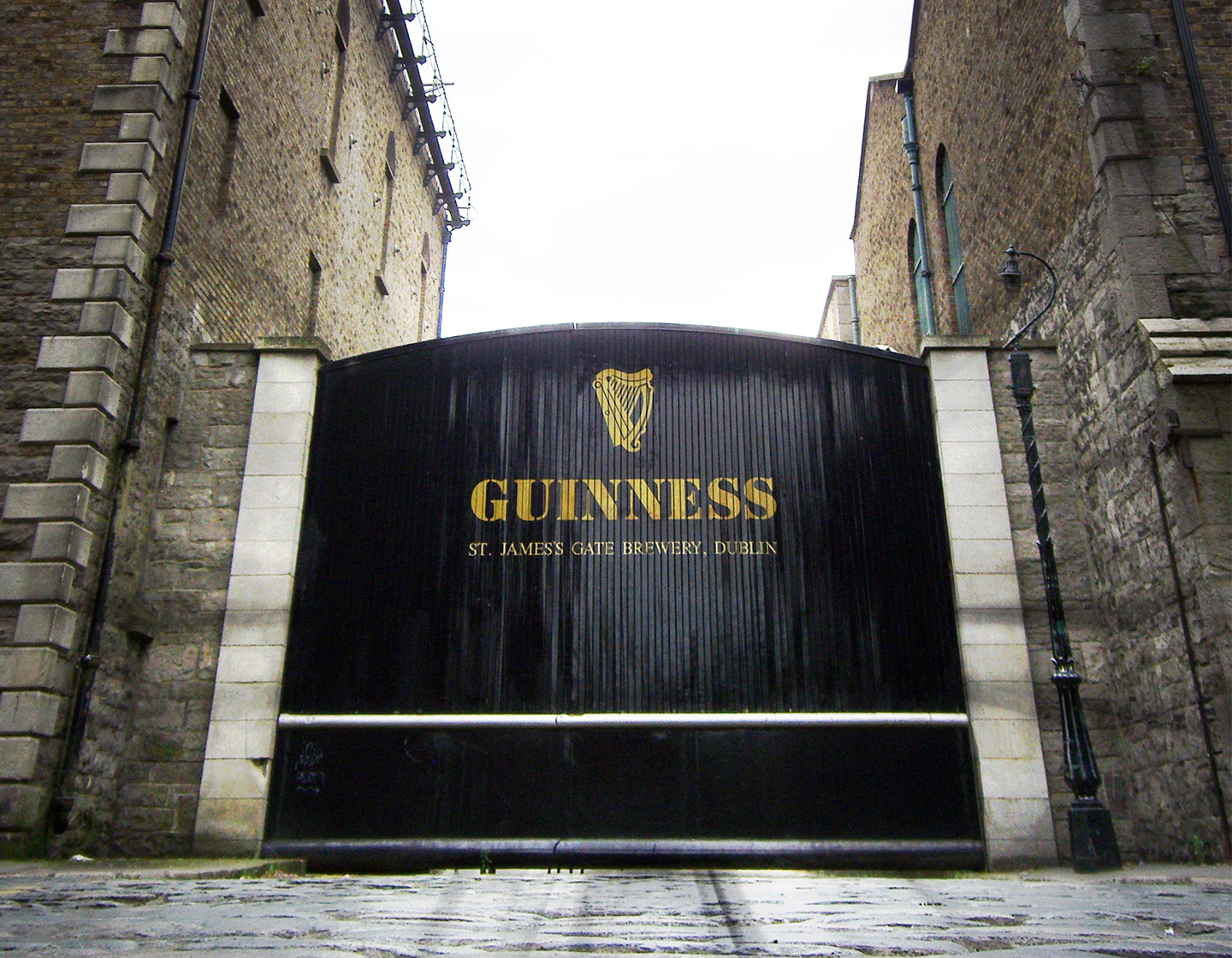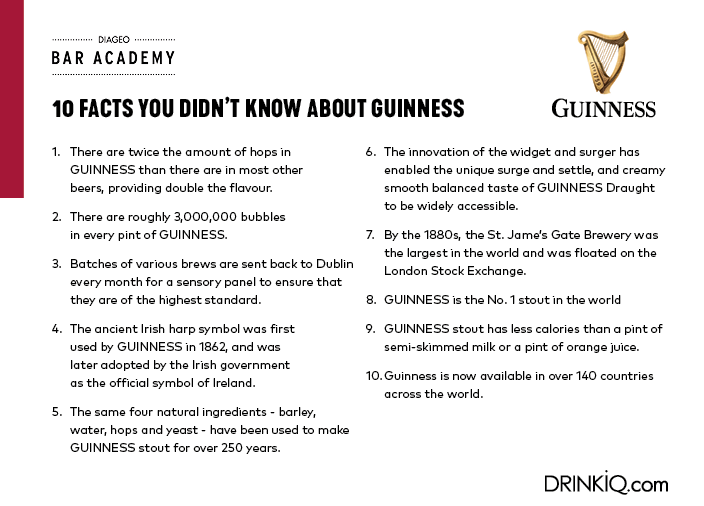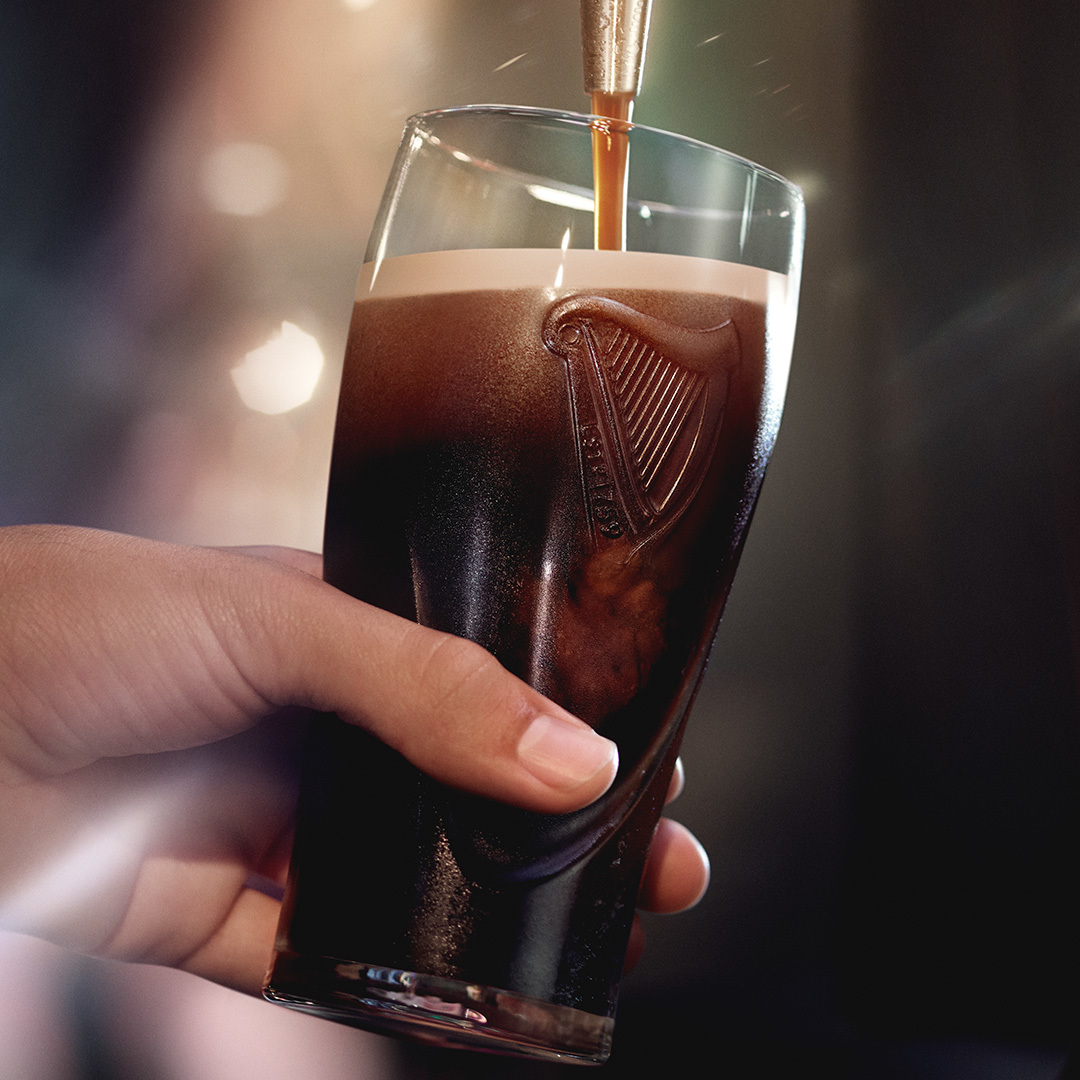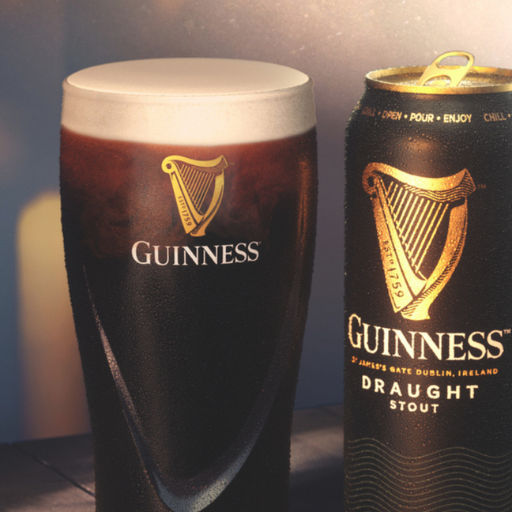
The secrets beyond St. James’ Gate in Dublin
The St. James’ Gate in Dublin city center features gold lettering: GUINNESS. What lies beyond this towering black gate? Read on as we explore this mystery.
Estimated read time: 5 minutes
Have you ever wondered what really goes on beyond the iconic black gates in the heart of Dublin? We’ve ventured inside to uncover the journey of the iconic beer, from the moment Michael Ash added nitrogen to the first pint, to how Guinness is contributing to positive social change in society.
Steeped in History

Steeped in History
Over 250 years ago, Arthur Guinness signed a 9000-year lease on a derelict brewery at St James’ Gate, Dublin, and so began the story of Guinness. Since then, generations have guarded the precious liquid and upheld its tradition of innovation and science.
In 1959, Guinness was the first brewery to use nitrogen in its beer, resulting in a smoother, creamier finish. The brand has continued to push the boundaries, with creative advertising campaigns such as Made of More and The Sapeurs, along with enterprising projects like the Brewers Project in 2014.
The Brewers Project
At St James Gate, the Brewers Project is a hub of beer exploration and passion, where some of the brightest brewing minds have been brewing and refining techniques since the Industrial Revolution.
The Brewers Project provided today’s brewers with a license to explore new recipes, reinterpret old ones, and collaborate to bring exciting beers to life. The project has created many successful beers, such as Dublin Porter, Hop House 13, and the Guinness Rye Pale Ale.
This experimental brewery at St James’ Gate has been functioning for over 100 years and is the main hub for all trials, experimentation and new innovations.
Pushing the Boundaries

Pushing the Boundaries
Today the pursuit of Guinness’ innovation is as crucial as it was at the beginning and is still intertwined as a vibrant part of the brand’s story. They invest as much in their people as they do in their beer.
Water for Life Africa - In 2007, Guinness launched Water for Life, a project focused on helping to provide safe drinking water to people and has completed over 200 projects across Africa.
The Leary Firefighters Foundation - ‘Backing the Bold’ is something Guinness has been known for. In response to the 1999 Cold Storage fire, Guinness has been supporting the foundation through funding and resources to provide the best available technology and training to U.S. firefighters.
The Surge and Settle
Michael Ash was the brains behind the “surge and settle” effect that Draught Guinness is famous for, thanks to his 'Easy Serve' system. He joined Guinness in 1951 and changed the approach to the craft entirely. He dreamt up the idea of adding nitrogen to the beer to ensure the smooth serves.
The Perfect Pour
In the late 1950s/early 1960s, as Michael Ash and his team perfected the nitrogenated stout, our brewers and scientists noted that, to attain a solid, substantial head, a two-part pour was optimal for two reasons:
It guarantees the perfect taste – The creamy, nitrogenated head of Guinness has a bitter note to it that is crucial to the beer’s overall flavor profile.
It delivers the perfect visual presentation – The combination of a consistent surge, the perfect head height and the perfect dome result in a visually appealing, perfect serve.
Watch the video below to learn how to pour the perfect pint of Guinness.
Watch Now
How to Pour the Perfect Pint of Guinness
It’s what’s inside that counts
Guinness is lovingly made from start to finish and that is what makes it stand out. This process entails:
Barley – It all begins with Irish barley. The barley is crushed and mixed with water from Poulaphouca Reservoir. It is then heated at 232°C and mashed to separate the grain from the liquid, producing the dark–roasted barley that gives Guinness its famous taste.
Hops – These are combined with the roasted barley to give Guinness its perfectly balanced flavor. The sweet wort is then boiled for 90 minutes before it is left to cool and settle.
Yeast – Guinness yeast is a strain that has been handed down through generations. A reserve amount is kept under lock and key just in case anything happens to the main supply. This secret yeast ensures the beer is perfectly fermented and packed with the iconic Guinness flavor.
Nitrogen – This is the groundbreaking innovation that makes Guinness better than all the rest. It is added during packaging after it has its ‘head’ height tested to make sure it perfectly embodies the smooth creamy head that Guinness is so famous for.
Sensory panel – Before any beer leaves the gates, it is tested by a sensory panel to ensure everything is of the highest quality.
Today, you can enjoy a pint of the black stuff in over 150 countries worldwide. No matter where you find it, you can rest assured it’s been brewed to the same high standards.
Join Our Community!
For more exciting brand stories, sign up and be a member of our global community. Also, subscribe to our newsletter and be the first to get new updates. Diageo Bar Academy offers a resource for bar professionals to connect with bar industry experts and access exclusive content.
Related Content

Guinness
Arguably the most famous beer in the world, dive into the story behind the brand and find out what makes Guinness so special.
Guinness Essentials
In this module, you’ll learn how you can serve a beautiful, great quality, great-tasting Guinness, every time.
Guinness Draught
Rich and creamy. Distinctive, ruby red color. Velvety in its finish. Discover the story behind Guinness Draught, the brand’s most iconic beer.
